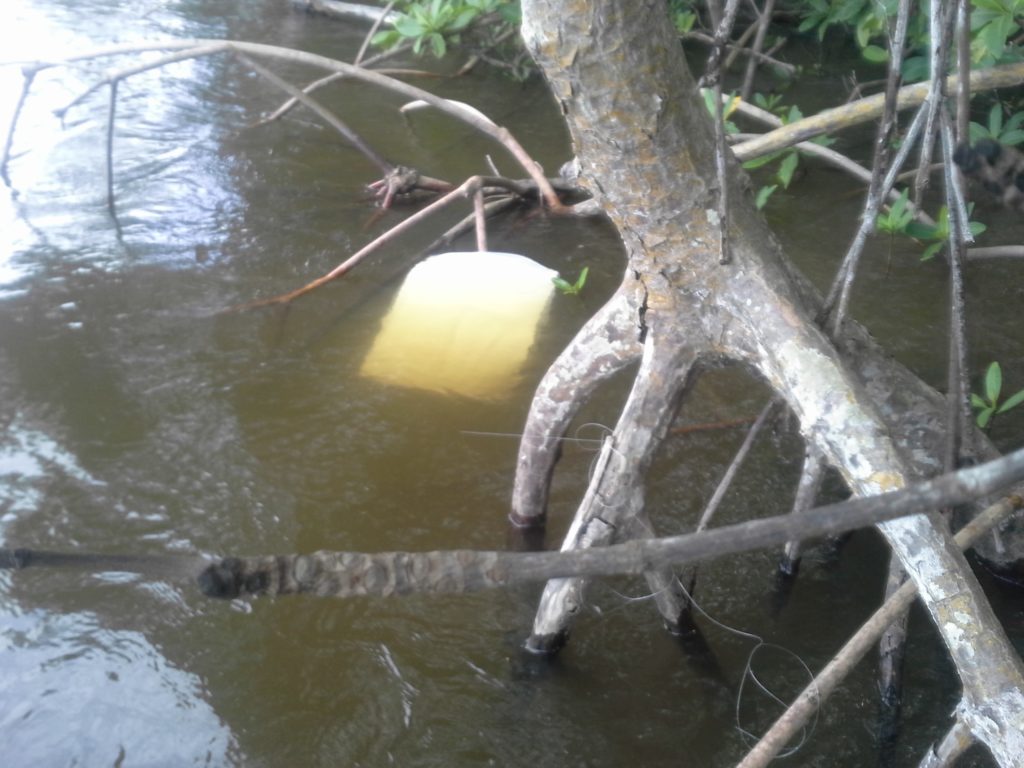Home » CLIMA 2016 | Florida Coastal Everglades LTER
Cortada works: Do Not Open | Climate Refugees | Hot for Hialeah | Psychoanalysis of Climate Change | Reclamation Project | Flor 500
LTER : Everglades (Florida) | HJ Andrews (Oregon) | Hubbard Brook (New Hampshire)
Florida Coastal Everglades LTER

Xavier Cortada, “Diatom,” archival ink on aluminum, 36″ x 18″, 2014 (edition of 5)
Cortada will exhibit his digital work, “Diatom.” Cortada’s diatoms hover over a layer of images (Cortada captured using Google maps) showing the artificial canals and lakes created to develop parcels of developable land where the River of Grass once flowed.
Diatoms are water-bound, single-celled symmetrical organisms encapsulated in silica. They harness the power of the sun to create oxygen and are responsible for generating for 1/3 of the air we breathe. Its glass shell, all that remains from the diatom, is used by scientists today to see what was as they research environmental issues crucial to the city in the century to come.
Scientists—and artists—can determine the past salinity of water by examining the shells of diatoms preserved in sedimentary core samples. Each diatom species has a different salinity preference, so changes in the mixture of fresh and sea water (driven by sea level and changes in water management) can be inferred from past diatom remains.
Using a microscope, Cortada captured images of diatoms from samples used by scientists at FIU’s Florida Coastal Everglades LTER (Long Term Ecological Research) to study the ecology of the Everglades and sea level rise.

Work in progress: Xavier Cortada, “Water Paintings: Florida Coastal Everglades,” residue captured from water flowing at FCE LTER sites on paper, 2016.
CLIMA showcases water samples collected from three of six sites monitored by the FCE LTER. Scientists use these samples to conduct their research in longitudinal studies that monitor water quality and help us better understand the ecology of the Everglades.
Alongside the samples are “Water Paintings” that Cortada created using the water from the same location were the samples were collected. Watercolor paper captured the residue left by the water flow in each of the three FCE LTER research sites: SRS 4, SRS 5 and SRS 6.
Below each water painting hang diatom sculptures. The ceramic sculptures are immersed in fertilizer. Among other things, scientists use diatoms to study the impact of agricultural pollutants in our waters.
About the Florida Coastal Everglades LTER
The FCE LTER program examines how global climate change and shifting approaches to water management impact the Florida Everglades and the 9 million residents in the region.
By conducting persistent research in freshwater wetlands, mangrove swamps and shallow seagrass communities along two major drainage basins of the 2,358-m2 Everglades National Park, the FCE LTER employs powerful long-term datasets to determine how the amount and quality of freshwater flowing through the Everglades influences ecological processes.
These key processes include rehydration of the freshwater aquifer, which supplies the Everglades and Floridians with potable water, and carbon accretion, which buffers coastal systems from sea level rise and storm damage.

Coupled socio-economic studies help reveal how decisions about Everglades restoration are made, and agency partnerships are fostered for conveyance of science into restoration policy
Overview: The majority of Florida Coastal Everglades LTER sites are located in freshwater marsh, estuarine mangroves, seagrass estuary ecosystems in Everglades National Park. Everglades National Park covers approximately 4300 km² of south Florida and is part of the greater Everglades ecosystem which extends north to Lake Okeechobee and the Kissimmee River. Research Our research focuses on understanding ecosystem processes along the two major drainage basins in Everglades National Park: Shark River Slough and Taylor Slough. We are particularly interested in the dynamics at the estuarine ecotone, where freshwater and estuarine wetlands meet. This ecotone is dynamic in the landscape in response to changing freshwater inflow (with Everglades restoration), sea level rise (climate change responses), and disturbance (particularly hurricanes and fire).
History: The FCE LTER is a relatively young program, established in 2000 when NSF expanded the LTER network to include 3 new coastal sites. FCE research questions focus on how changing freshwater inflow, sea level rise and climate change, and disturbance interact to control ecological pattern and process in oligotrophic ecosystems. These questions tend to focus on the oligohaline ecotone region of the coastal Everglades. The entire FCE LTER site is enclosed in Everglades National Park, which at over 4300 km2 is the third largest wilderness in the lower 48 states. We cover much of this large, diverse, low-nutrient landscape with 17 permanent sites located along two transects oriented with the natural flow of water. The FCE LTER scientific group is as diverse as the landscape, and includes senior scientists, staff, and students from nearly 10 universities, from all key state and federal agencies, and from several NGOs.
Read more.
Research Topics: How regional controls (climate change, changing freshwater inflow) control population and ecosystem level dynamics in wetland-dominated coastal landscapes, with an emphasis on the oligohaline zone and taking advantage of the oligotrophic status of the entire coastal Everglades system.
 In the lab: Cortada uses microscope to capture images of diatoms from FCE LTER Core Sample slides.
In the lab: Cortada uses microscope to capture images of diatoms from FCE LTER Core Sample slides.
Special thanks to FIU SEAS, FCE LTER, Dr. Evelyn Gaiser, Rafael Travieso, Franco Tobias, Nicholas Oehm, and Dr. Anna Wachnicka.

